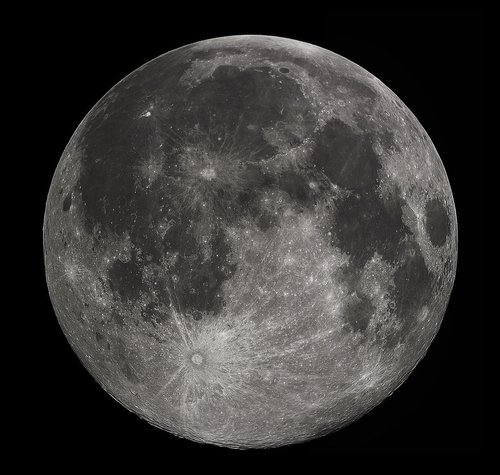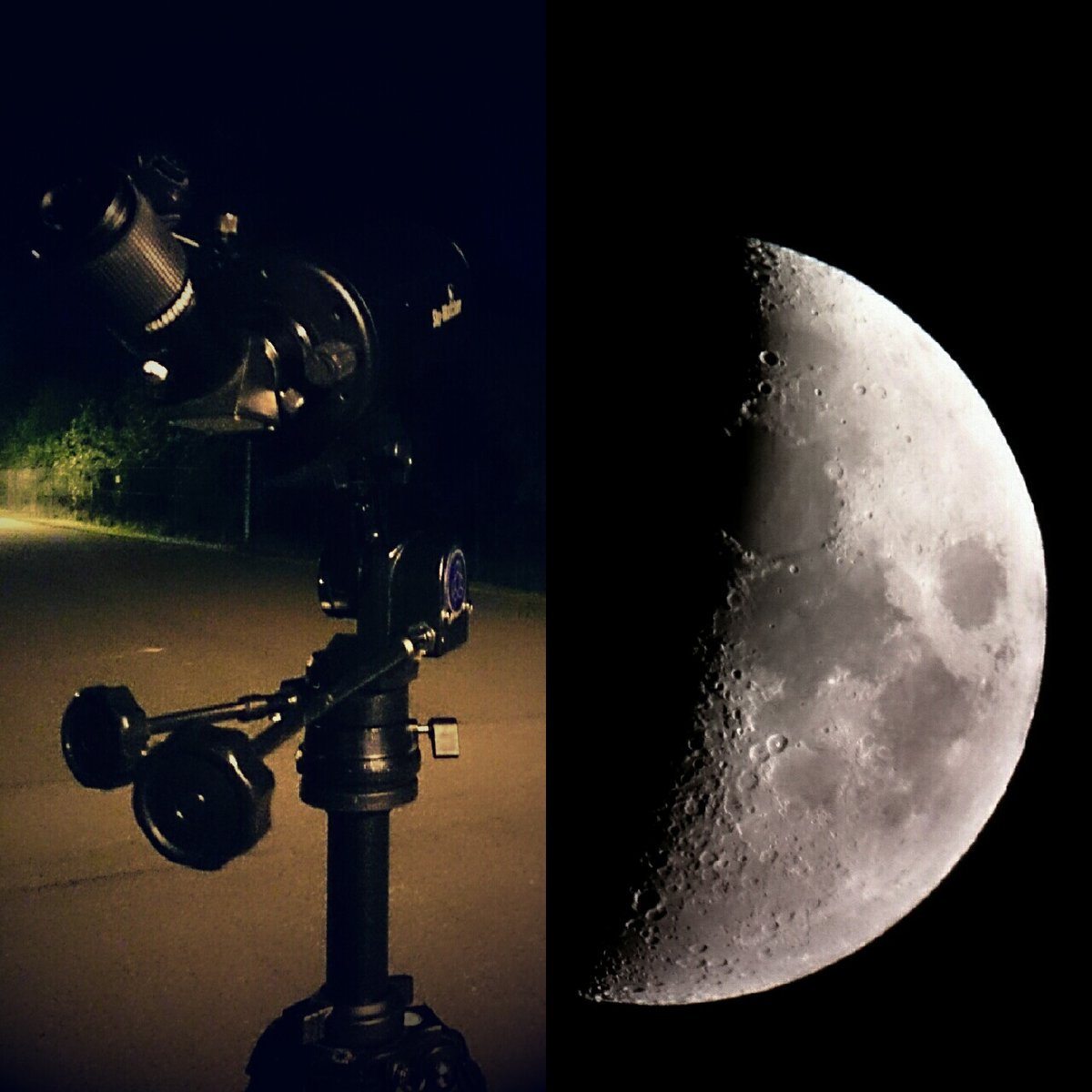Current Info for Observer
as of 05/02/2024 4:50 a.m.
Please login to view current observation details
General Info
as of 05/02/2024 4:50 a.m.
| Type | Moon |
| Constellation | Capricornus |
| Orbits | Earth |
| Right ascension | 21:42:07.84 (Hours) |
| Declination | -18:15:19.9 (Deg) |
| % illuminated | 41.949 |
| Mass | 7.3477e+22 kg |
Earth's only natural satellite | |
☉ Solar Masses ⊕ Earth Masses j Jupiter Masses
Orion 10'' SkyQuest dobsonian
0 points
After Saturn the dinner party crew was treated with a view of the moon. The extreme humidity was apparent as the entire image was shimmering. But still, a few gasps were had behind the eyepiece. The first view of the moon in any telescope is a wondrous experience.
Orion XT8
100 points
First light observation. 2nd object observed with the new telescope. Filled most of the FOV using the 25mm eyepiece. The 6.3mm eyepiece revealed much detail along the terminator. Very easy to see details in the craters and mountains.
Skywatcher Skymax 90
100 points
Just a brief grab & go lunar session during a break (working night shift this week). Spent about 10 minutes randomly scanning the surface of the moon, mostly around the terminator. I really need to have a proper lunar session soon, armed with a good lunar map to be able to identify all the interesting features up there and continue with the Lunar 100 list!
Naked eye
0 points
Howl at the full moon!
Celestron 127eq
100 points
My brother-in-law had wanted to view the moon through my telescope, and it was the first clear night we'd had in a while so I went out to my dark site. BIL bailed, and not one to waste a trip, I spent a few minutes observing the surface of the waxing gibbous.
Generate a finder chart
The following form will generate a PDF finder chart suitable for printing using to locate objects in the sky with your telescope!
The Date is only really useful for solar system objects, as deep space objects move measurably only on a galactic timescale.
The larger the F.O.V (field of view), the more "zoomed out" the object will appear. It can be helpful to print several charts of the same object with different field of views.
Limiting the magnitude (remember, lower magnitude means brighter!) of stars and objects can make sure your chart is not cluttered with dim objects that you may not be visible to you anyway. The defaults are good, but try experimenting with raising and lowering the values.
Please login to post comments

